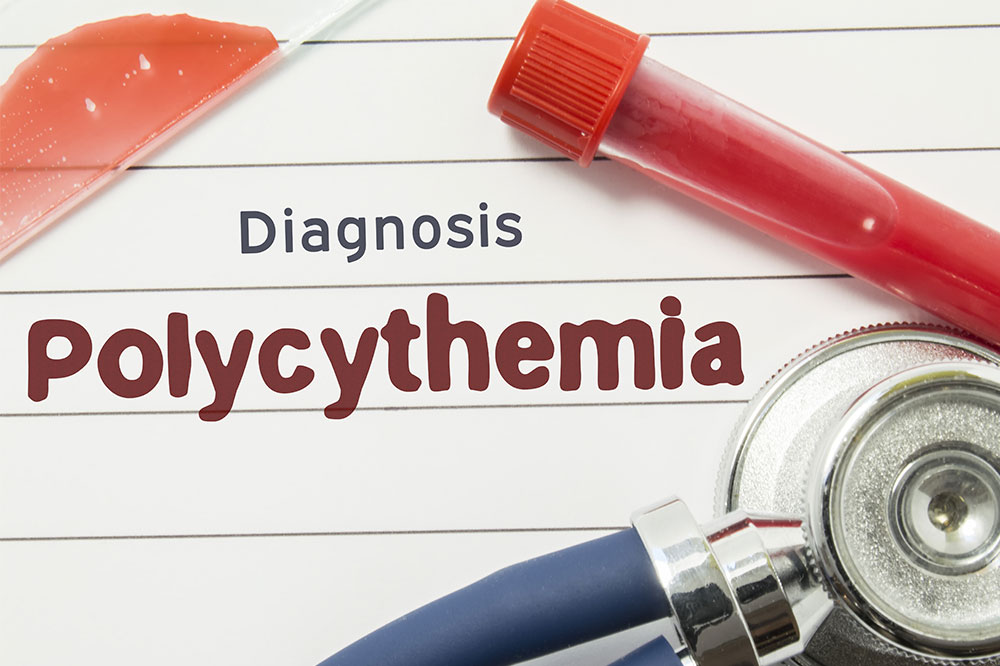Comprehensive Guide to Polycythemia Vera: Recognizing Symptoms, Causes, and Effective Management Strategies
Polycythemia vera is a chronic blood disorder marked by excessive red blood cell production, increasing clot risk. Early symptoms include headaches, dizziness, and spleen enlargement. It results mainly from a JAK2 gene mutation, acquired during life. Treatment options such as phlebotomy, medications, and lifestyle changes are effective in controlling the condition. Regular medical supervision is essential to prevent complications like blood clots. With proper management, many patients lead healthy lives. This guide offers detailed insights into symptoms, causes, and treatment strategies to help patients handle PV confidently.

Comprehensive Guide to Polycythemia Vera: Recognizing Symptoms, Causes, and Effective Management Strategies
Polycythemia vera (PV) is a rare, chronic blood disorder that falls under the category of myeloproliferative neoplasms. Characterized by the excessive production of red blood cells in the bone marrow, PV leads to increased blood viscosity, which hampers normal circulation throughout the body. Without proper management, this condition elevates the risk of dangerous blood clots, stroke, and other serious complications that can threaten life. Early detection and tailored treatment plans are paramount to controlling symptoms, preventing complications, and maintaining quality of life.
Understanding PV involves recognizing its symptoms, underlying causes, and the best approaches to management. This comprehensive guide aims to equip patients, caregivers, and healthcare professionals with the necessary information to navigate this complex condition effectively. From lifestyle modifications and dietary tips to medical treatments, learn everything you need to know about managing polycythemia vera efficiently.
Signs and Symptoms of Polycythemia Vera
Many individuals with PV may remain asymptomatic for years, often discovering the disorder incidentally during routine blood tests. However, when symptoms do manifest, they can significantly impact daily life and signal the need for medical intervention. Recognizing these signs early allows for prompt diagnosis and treatment, reducing the risk of severe complications.
Common symptoms of polycythemia vera include:
Persistent headaches and dizziness, often described as lightheadedness, which can occur due to increased blood thickness affecting cerebral circulation.
Chronic fatigue and weakness, resulting from decreased oxygen delivery to tissues.
Blurred or disturbed vision, which may fluctuate throughout the day.
Itching sensations, especially after hot showers or baths; this is a distinctive symptom associated with PV and related to increased histamine release.
Numbness or tingling sensations, particularly in the hands and feet, caused by impaired blood flow.
A sensation of fullness or discomfort in the upper left abdomen, often linked to an enlarged spleen (splenomegaly), a common feature in PV patients.
Unexplained bleeding, such as frequent nosebleeds, bleeding gums, or easy bruising, resulting from abnormal platelet function.
Swollen or painful joints, which may involve the big toe or other extremities, sometimes mistaken for gout.
Breathing difficulties when lying flat, due to increased blood volume or coexisting respiratory issues.
Causes Behind Polycythemia Vera
The fundamental cause of PV involves genetic mutations within the bone marrow's stem cells responsible for blood cell production. Among these mutations, the most prevalent is in the JAK2 gene, found in approximately 90% of cases. This mutation causes the JAK2 protein to become constitutively active, leading to uncontrolled proliferation of red blood cell precursors.
Unlike inherited genetic disorders, PV mutations are typically acquired during an individual's lifetime. The exact trigger for the mutation remains unclear but is believed to involve environmental factors, radiation exposure, or other mutagenic influences. The abnormal stem cells continue to multiply excessively, leading to a high red blood cell mass, increased blood viscosity, and related complications.
Understanding the causative mechanisms behind PV is crucial for diagnosis and treatment. The increased production of red blood cells not only thickens the blood but can also impair oxygen delivery, causing symptoms like fatigue and dizziness. Advanced genetic testing plays a vital role in confirming the diagnosis and distinguishing PV from other blood disorders.
Effective Management and Lifestyle Adjustments
Managing polycythemia vera requires a multifaceted approach that combines medical treatment with lifestyle modifications. The primary goal is to reduce the risk of blood clots, control symptoms, and prevent disease progression. Regular monitoring of blood counts through routine blood tests is essential for adjusting treatment plans and tracking disease status.
Key lifestyle strategies include:
Engaging in regular cardiovascular exercises such as walking, swimming, or cycling to promote healthy circulation; however, abrupt or strenuous activity should be avoided during treatment periods.
Maintaining adequate hydration by drinking plenty of water daily to prevent blood thickening and reduce the risk of kidney stones and gout.
Avoiding high-altitude environments where oxygen levels are lower, as hypoxia can stimulate increased red blood cell production.
Monitoring blood pressure and maintaining a healthy weight through balanced nutrition.
Quitting smoking and limiting alcohol consumption to support overall cardiovascular health.
Dietary Tips for Supporting Polycythemia Vera Treatment
While no specific diet can cure PV, dietary choices play a critical role in managing symptoms and preventing complications. An anti-inflammatory, nutrient-rich diet can boost overall health and support treatment efficacy.
Recommendations include:
Drinking plenty of fluids, especially water, to keep blood thin and prevent dehydration.
Consuming foods rich in calcium, such as dairy products, leafy greens, and fortified plant-based alternatives, to support bone health.
Eating a variety of fresh fruits and vegetables to provide antioxidants, vitamins, and minerals that reduce inflammation.
Limiting foods high in oxalates—such as spinach, beets, beans, and nuts—to decrease kidney stone risk, especially if predisposed.
Opting for whole grains like brown rice, oats, and whole wheat bread to provide steady energy and fiber.
Reducing salt, sugar, and fried foods to minimize cardiovascular strain and inflammation.
Medical Treatments for Polycythemia Vera
Managing PV effectively involves several medical interventions designed to lower red blood cell counts and prevent clot formation. Treatment plans are personalized based on disease severity, patient age, and coexisting health conditions.
Key treatments include:
Phlebotomy: The cornerstone of PV management, this involves regular blood removal (similar to blood donation) to decrease blood viscosity. The frequency is tailored to individual patient needs, often weekly at diagnosis, then less frequently once stable.
Medications: Cytoreductive agents such as hydroxyurea help suppress bone marrow activity, reducing red blood cell production. Additionally, low-dose aspirin is commonly prescribed to lower thrombotic risk, provided there are no contraindications.
Radiation therapy: In select cases, low-dose radiation may be used to target overactive marrow or spleen symptoms, although this is less common.
JAK2 inhibitors: Emerging targeted therapies aim at the JAK2 mutation, offering hope for patients resistant to conventional treatments.
Long-term Outlook and Preventive Measures
With appropriate management, many patients with PV enjoy prolonged, healthy lives. The crucial aspect is ongoing surveillance to prevent blood clots, which are the leading cause of morbidity and mortality in PV. Regular blood tests, imaging studies, and clinical evaluations enable prompt adjustments in therapy.
Patients should adopt a healthy lifestyle—avoiding smoking, managing comorbidities such as hypertension and diabetes, and staying physically active. Education about recognizing early signs of thrombotic events like chest pain, severe headaches, or sudden weakness is vital for timely medical intervention.
Innovations in targeted therapies and better understanding of the genetic underpinnings continue to improve treatment options, offering hope for more effective management in the future.
In summary, polycythemia vera is a manageable blood disorder with vigilant monitoring and a comprehensive treatment approach. Early diagnosis, lifestyle adjustments, and adherence to medical advice can significantly reduce risks and promote a long, healthy life.





